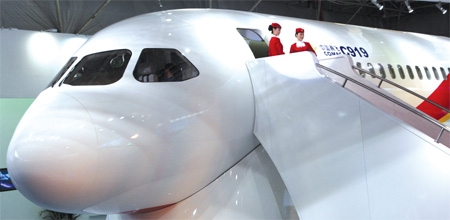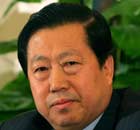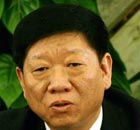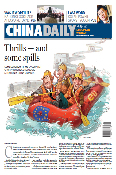Towards new financial order
Updated: 2010-07-05 08:00
By Zhang Monan (China Daily)
The reform process will prove to be harder, as the international monetary system dominated by the US dollar hasn't been completely overthrown.
Over the past two decades, with global division of labor and industrial production experiencing a major change, a new economic landscape has emerged.
Developing countries mainly depend on booming industrial production and trade, while developing countries rely on virtual financial transactions.
Such an increasingly interdependent global division system has made global production more efficient and contributed much to the 20-year prosperity of the global economy. But it has also aggravated the global wealth distribution imbalance.
Judging from a variety of standards, the US dollar is still the world's most important currency. The current utilization rates of dollar in international trade valuation, foreign exchange reserves and international financial transactions are 48 percent, 61.3 percent and 83.6 percent respectively.
Besides targeting international financial organizations, reform of the international financial system also covers many institutional frameworks, including the international exchange rate system, the international expenses and receipts adjustment mechanism, the creation and allocation of international liquidity, management of international capital flows and coordination of international monetary and financial policies.
On reforming the international financial system, the US is willing to accept only minor changes to international financial institutions, such as moderate tightening of financial oversight and symbolic increase in developing countries' voting power in the IMF and the World Bank.
The US has set two benchmarks on the issue - that no country be allowed to weaken its dominance over the international financial system and no reform should alter the dollar's status as the world's leading currency.
The unbalanced international debt circulation system hasn't been reversed. The global financial crisis has not only intensified the imbalance between deficit-ridden nations and surplus ones, and between consuming and manufacturing nations, but has also projected the imbalance between debtors and creditors.
The operational model of the US economy heavily depends on two aspects. The first is government spending, which depends on issuing treasury bonds to make up for the deficit between revenue and expenditure. The other is household consumption, a large part of which comes from bank loans.
Through the securitization of assets, banks then transfer their loans risk to buyers of securities. In this sense, the US debt economy is the root cause of global economic imbalance.
While pinning their hopes on emerging economies to sustain recovery, developed countries should show more respect for the long-term interests of developing countries.
Only through reestablishing the currency and debt systems will a framework for strong, sustainable and balanced growth become a reality.
The author is an economics researcher with the State Information Center.
(China Daily 07/05/2010 page8)
Paper's Digest

Chinese jet takes on Big 2
First large commercial plane set to ride on demand for aircraft as economy grows.
Super-CPU only for domestic eyes
Specials

Gaining ground
Doing business in china for westerners has come a long way, Peter batey says.

Safeguarding environment a priority
China continues to face mounting pressure to curb environmental degradation, despite progress in reducing pollution over the last five years, the environmental protection minister warned.

Employment to remain a continuing challenge
China's top labor official said the country will face a tough employment situation in the next five years.
